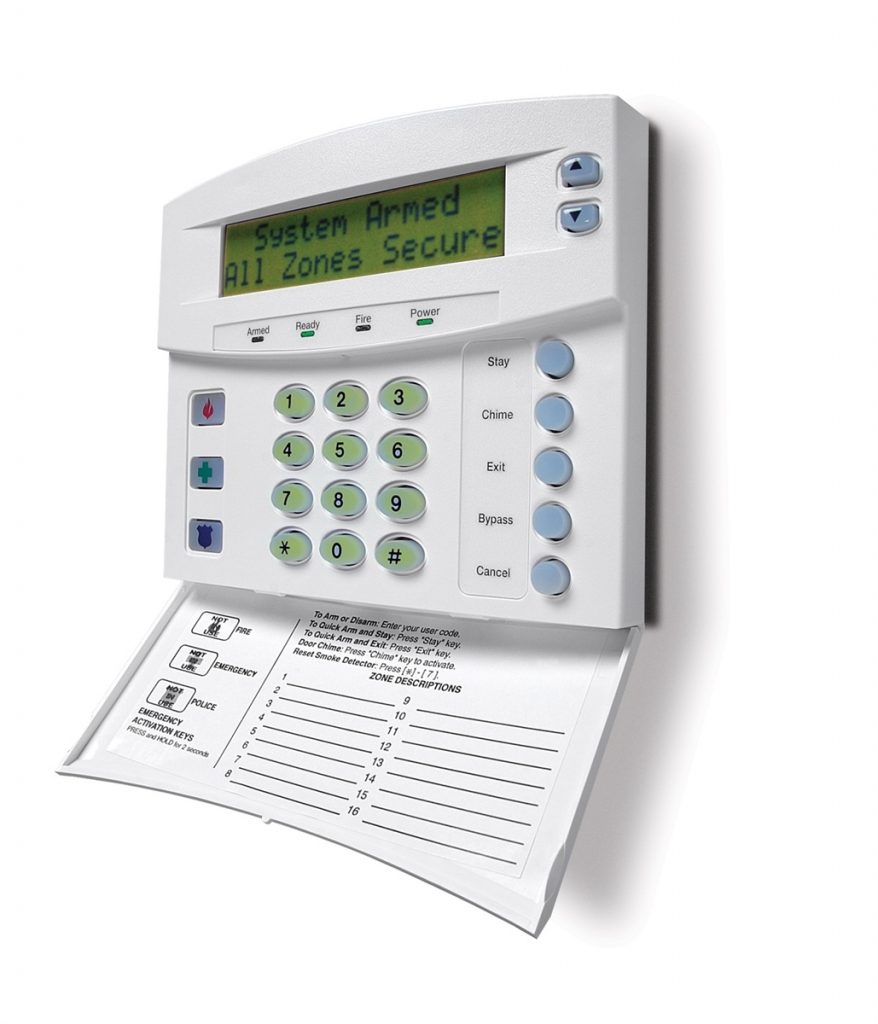Earlier this year, we created a post to serve as Your Guide to How Alarm Systems Work. In that post, we shared the “basics” behind alarm system operation and use. That overview included a helpful guide to the types of equipment we can add to alarm systems. It also included an overview of how our various monitoring options work. However, this information led to some additional questions. For example, what should customers do upon hearing their alarm system’s siren blaring? What if it’s a false alarm? Furthermore, if the alarm catches a legitimate emergency, how can our customers create as fast an emergency dispatch as possible? In this post, we share the next steps to follow after your alarm goes off!
We will begin with a look at how alarm events differ when you have a monitored security system versus a non-monitored system. From there, we will look at a couple different ways you can disarm your security system if needed. Finally, we will also share how you can cancel or confirm your alarm event. At some point, many of our customers experience a false alarm. We will share how to cancel an emergency dispatch due to a non-emergency alarm activation. Moreover, we will also share share how you can create a quicker dispatch if desired! Now, let’s begin with a look at monitored and non-monitored alarm activations.
Monitored Versus Non-Monitored Alarm Activations
Many of our customers opt to have their alarms monitored by our central station. This service involves having us connect your security system to our central station via your phone lines or an independent cellular dialer. Recently, this latter option has gotten quite popular, as more and more homes lack traditional phone lines. In fact, we recommend using our cellular dialer, powered by Alarm.com, to monitor your security system. Doing so allows your system to remain monitored even when your phone lines go down.
Additionally, our interactive cellular monitoring even allows you to control your alarm remotely with a smart phone, as detailed in our recent post, Signs You Need a Security System Upgrade! If you have a monitored security system, it will contact our central station upon activation. From there, our central station calls your home to check on the situation. If necessary, our central station will even create an emergency police or fire department dispatch.

Most security system users arm and disarm their alarm system using a keypad, such as this model by Interlogix.
Despite the security benefits of alarm monitoring, some of our customers do not opt for this feature. Instead, they have what we refer to as “local” alarms. Local alarms create a siren response upon activation, but do not create a central station response. Therefore, they will not create an emergency dispatch if your alarm goes off. At this point, we’ve gone over the basics regarding how security systems react to alarm events. Now, let’s look at your next steps if you experience an alarm!
Turning Off Your Alarm
In this section, we will discuss a couple ways that you can silence your siren after an alarm occurs. We refer to this action as “disarming” your alarm. Whether you have a monitored security system or not, you will at some point want to complete this step. Our customers use a couple methods to do so, so let’s begin this discussion with a look at our most “traditional” method of disarming your security system.
Using a Keypad to Disarm Your Security System
Regardless of what type of alarm you have, all security systems include some type of keypad. This piece of equipment allows you to “interact” with your alarm system. In most cases, disarming an alarm involves hitting an “off” or “disarm” button, followed by a customizable numeric code. Alarm users follow this process to silence their alarm’s siren after activation. Additionally, they perform this task after entering their home or business to prevent their siren from sounding after entering the property.
Often, our customers provide the same code to everyone that uses a security system. For example, homeowners often follow this practice. Other times, customers create many codes for different individuals. This allows them to add and delete codes as needed. Our commercial customers often follow this practice as a way to keep their buildings secure. After all, business owners do not want former employees to have a code that they can use to disarm their old employer’s security system down the road! More often than not, people imagine keypad disarming when they envision silencing a security system’s siren. However, we do offer a couple other popular options. Let’s take a look at those next!
Remote Alarm Control
Sometimes, customers wish to control their alarm remotely. We offer a couple ways to provide this service. For example, we offer wireless keyfobs that offer remote alarm control. These devices allow customers to disarm their security system in advance, as long as they are within 100 feet or so of their property. Doing so can avoid the need to rush in certain situations. For example, imagine sitting in your driveway with a car full of groceries. Of course, you could enter your home, drop your bags of food, and rush to your keypad to disarm the alarm system. Or, you can simply complete this task from your car with the press of a button before entering your home.

Confirming an alarm event often leads to a higher-priority police dispatch than a non-confirmed alarm event.
Furthermore, we also mentioned our interactive cellular service earlier in this post. If you have our interactive cellular service, you also have an Alarm.com account. This account allows you to use any internet-connected device to control your security system. On the way to work and realizing you forgot to arm the alarm on the way out? No problem! Simply pull out your phone and use the Alarm.com app to do so. Additionally, this feature allows you to disarm the security system remotely without giving out an alarm code. This proves especially useful if you have house sitters or contractors that need access to your home. Now, let’s look at a couple steps to deal with a potential emergency dispatch if your monitored alarm does detect a potential break-in.
Confirming or Cancelling An Alarm
If you have a monitored security system, our central station will attempt to contact you upon receiving an alarm signal. At this point, you have a couple options. If you know your alarm was activated in error, you will want to cancel an emergency dispatch. False alarms happen for a variety of reasons. These include both systems malfunctions and user errors. However, perhaps you do not know what activated your security system. In this case, you will want the proper authorities sent to your home! In this section, we share how you can get the proper central station response after an alarm. Let’s get started with a look at how you can go through our central station directly to make this happen.
Communication with our Central Station
As we pointed out above, our central station will call you upon receiving an emergency alarm activation. Of course, customers can choose which number the central station calls. Customers with home phone numbers generally choose to have our central station call this number. However, customers without home phone lines must use cell phones as their primary alarm communication. In the case of a false alarm, you can simply pick up the phone and cancel the alarm. This involves providing our central station with your “passcode.” Passcodes take the form of a word or group of numbers that helps confirm your identity. Giving the “all-clear” and providing your passcode will negate a potential emergency dispatch.
However, perhaps you receive a central station phone call while away from the home. In this case, you may want to request the appropriate police or fire department response. Customers with home phones generally receive emergency calls after a dispatch when they are away from the house. This is due to the fact that the central station has already called the home and received no answer. At this point, the central station calls for emergency response before calling your cell phone. However, you can still cancel this response if you suspect a false alarm. This process involves simply providing your passcode and asking to cancel the emergency response.
On the other hand, customers without home phones will receive this phone call before any dispatch has been made. Our central station generally calls a designated “premise phone” before calling for additional help. If a cell phone acts as your premise phone, you will have the immediate choice to confirm or cancel your alarm. If you miss the phone call from the central station, then our central station will still call for help. At this point, you should have a good understanding of our central station alarm response. Now, let’s look at how you can use our interactive cellular monitoring to make this process more efficient!

The ability to immediately verify or cancel an alarm can lead to a more efficient response to a potential emergency.
Immediate Smartphone-Based Alarm Cancellations
Our interactive cellular monitoring provides quite a few benefits to customers. We already mentioned the ability to remotely arm and disarm your security system. Furthermore, this service creates customizable alerts that get sent from your alarm right to your phone! These alerts include events such as suspected break-ins, as well as other important notices. For example, alarm status updates such as low sensor batteries and users arming and disarming your security system can create alerts, if you wish. Finally, your Alarm.com app allows you to quickly confirm or cancel alarm activations.
In the case of an alarm, the pictured Alarm.com menu will pop up on your phone. Once this happens, you can verify or cancel the alarm with one touch of a button! Awhile back, we created a post sharing Best Practices for Creating a Quick Alarm Response. In that post, we shared how a “confirmed” alarm dispatch can carry more weight than one created because a customer did not answer their phone. Therefore, adding this monitoring service can make your security system more effective. The ability to confirm a police dispatch in response to an alarm adds a huge security benefit to interactive cellular monitoring!
Putting it All Together
We hope this this post gives you some ideas for next steps in case your alarm goes off! We also encourage you to contact us with any security-related questions you may have. Furthermore, we invite you to take advantage of our free site survey program. We offer complimentary surveys to both new and existing customers alike. Perhaps this post has piqued your interest in installing a security system. Or maybe you have questions about locks, cameras, access control, or one of our many other security-related offerings. Either way, we can work with you to create a complete security plan to keep you, your most valued possessions, and your loved ones as safe and secure as possible!
